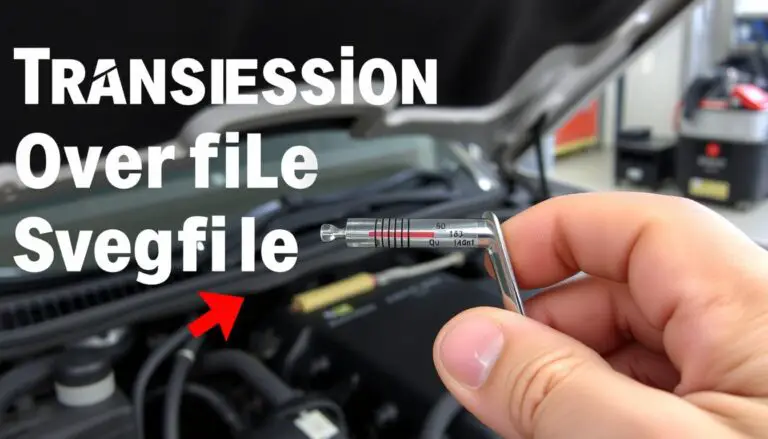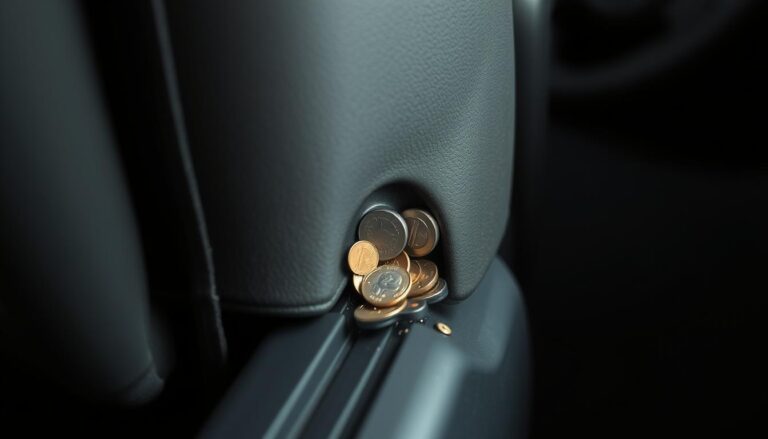As a Tesla owner, it is imperative to comprehend the correct methodology for disengaging your charger. This knowledge is vital for ensuring safety and prolonging the life of your vehicle.
The act of disconnecting your Tesla charger not only guarantees your personal safety but also contributes to the preservation of your vehicle’s charging apparatus. This article will elucidate the 5 elementary steps necessary to disconnect your Tesla charger with ease and precision.
Adhering to these directives will empower you with the understanding and confidence to execute this procedure adeptly. The methodology is crafted to be both straightforward and expedient, facilitating your ability to manage your Tesla charging requirements efficiently.
Key Takeaways
- Understand the importance of safely disconnecting your Tesla charger.
- Learn the 5 simple steps to disconnect your Tesla charger.
- Enhance your knowledge on Tesla charging best practices.
- Ensure your safety and the longevity of your Tesla’s charging system.
- Gain confidence in managing your Tesla charging needs.
Understanding Tesla Charging Basics
Grasping the foundational principles of Tesla charging is imperative for effective and secure electric vehicle management. Tesla’s charging mechanism is crafted for simplicity, yet comprehension of its components and functionality can significantly augment the user’s experience.
Types of Tesla Charging Equipment and Connectors
Tesla presents a spectrum of charging options, encompassing the Mobile Connector, Wall Connector, and Supercharger. The Tesla Mobile Connector serves as a multifunctional charging tool, compatible with diverse power sources. In contrast, the Wall Connector is the preferred choice for home charging, facilitating expedited charging velocities. Superchargers, on the other hand, are engineered for extensive travel, enabling swift charging during journeys.

The Importance of Proper Disconnection for Safety and Equipment Longevity
Adherence to correct disconnection protocols is paramount for both safety and the preservation of charging apparatus longevity. Mismanagement in disconnection can precipitate wear and damage on the connector and the vehicle’s charging interface. A diligently maintained charging apparatus guarantees consistent functionality and diminishes the likelihood of electrical malfunctions.
| Charging Method | Charging Speed | Typical Use |
|---|---|---|
| Mobile Connector | Up to 3 miles per hour (Level 1, 120V) | Emergency or travel charging |
| Wall Connector | Up to 44 miles per hour (240V, 50A) | Home charging |
| Supercharger | Up to 170 miles in 30 minutes (V3 Supercharger) | Long-distance travel |
When to Disconnect Your Tesla Charger
The determination of when to sever the connection from your Tesla charger is contingent upon a myriad of variables, including your habitual driving patterns and established charging protocols. Grasping these elements is paramount for the preservation of your vehicle’s integrity and the enhancement of its operational efficacy.
Daily Charging Routines and Best Practices
Typically, Tesla proprietors engage in nightly charging, disconnecting their vehicles in the a.m. hours. Adherence to best practices mandates that your Tesla’s charge be maintained between 20% and 80% if it is your primary mode of transportation. This regimen is crucial for the battery’s longevity. It is advisable to modify your charging regimen in accordance with your vehicular usage.
| Daily Driving Distance | Recommended Charging Level | Frequency of Disconnection |
|---|---|---|
| Less than 20 miles | 20% – 80% | Daily |
| 20 – 50 miles | 20% – 90% | Daily |
| More than 50 miles | 10% – 100% | As needed |
Travel and Special Circumstances Requiring Disconnection
During journeys, it is imperative to disconnect your Tesla charger in alignment with your travel plans. For extended excursions, it may be necessary to fully charge your vehicle. Always inspect the charging port and cable for any signs of damage prior to disconnection. Extreme weather conditions or other unique scenarios may necessitate adjustments to your charging and disconnection protocols.

Preparing to Disconnect Your Tesla Charger
The process of disconnecting your Tesla charger necessitates adherence to a series of critical steps, aimed at guaranteeing both safety and operational efficiency. Prior to initiating the disconnection procedure, it is imperative to confirm that your vehicle is in an appropriate state of readiness. This verification must be accompanied by the implementation of necessary safety measures.
Checking Vehicle Status and Charge Completion
Initiate by verifying the status of your Tesla’s charging cycle to ascertain if it has reached completion. This verification can be accomplished through the vehicle’s charging screen or the Tesla app. Confirming charge completion is paramount to prevent the interruption of the ongoing charging process.
A concise overview of the preparatory steps and their corresponding statuses is presented in the subsequent table:
| Step | Status | Action |
|---|---|---|
| Check Charge Completion | Completed | Verify on Tesla display or app |
| Vehicle Status Check | Ready | Check vehicle display |
Essential Safety Precautions Before Disconnection
Adherence to certain safety protocols is mandatory prior to disconnection. Ensure that the vehicle is in Park mode and that the brakes are applied. Ensure the charging area is well-ventilated to mitigate potential hazards.
By meticulously adhering to these guidelines, one can ensure a safe and efficient disconnection of the Tesla charger.
How to Disconnect Tesla Charger: 5-Step Process
The disconnection of a Tesla charger necessitates adherence to a series of critical steps, paramount for both safety and operational efficiency. Mastery of these procedures is imperative for Tesla proprietors, serving to preserve the integrity of their vehicle’s charging apparatus and overall health.
Step 1: Unlock the Vehicle Using Key Fob or Tesla App
The commencement of the disconnection sequence mandates the initial step of unlocking your Tesla. This can be achieved through the utilization of the key fob or the Tesla app on your smartphone. Unlocking is fundamental, as it enables the charging system to acknowledge the initiation of the disconnection protocol. It is imperative to ensure the vehicle is unlocked prior to proceeding to circumvent potential complications with the charging handle.
Step 2: Press the Button on the Charging Handle to Release
Upon successful unlocking of your vehicle, the subsequent action involves the activation of the button on the Tesla charging handle. This button is engineered to liberate the connector from the vehicle’s charging port. The act of pressing and holding this button serves as a signal to the vehicle, prompting it to prepare for disconnection. This operation, while seemingly simple, necessitates a delicate yet firm application of pressure.
Step 3: Wait for the Charging Port Light to Change Color
Following the activation of the charging handle’s button, a period of patience is required, awaiting the charging port light to transition to a different color. This visual indicator signifies that the vehicle has acknowledged the command to halt charging and is in a state of readiness for the connector’s removal. The transition from a steady to a blinking or altered color is a critical signal, affirming the safety of proceeding with the disconnection.
Step 4: Gently Remove the Connector from the Charging Port
Upon the charging port light’s indication of readiness, the subsequent action involves the careful extraction of the connector from the charging port. This step demands meticulousness to avert potential damage to either the connector or the port. The recommended method is to gently pull the connector straight out.
Step 5: Properly Store the Charging Cable to Prevent Damage
The culmination of the disconnection process entails the appropriate storage of the charging cable. Post-disconnection, it is crucial to coil the cable correctly and secure it in a dry, protected location to forestall damage. Adequate storage not only extends the lifespan of the charging cable but also ensures its continued functionality for future use.
Adherence to these Tesla charger disconnection steps guarantees a secure and efficient charging cycle for your vehicle. Regular inspections of your charging apparatus, coupled with adherence to these protocols, are vital for sustaining your Tesla’s performance and longevity.
Using the Tesla App for Charging Management
The Tesla app revolutionizes charging management, enabling owners to oversee and regulate their vehicle’s charging activities from any location. This capability is invaluable for those who must manage their charging sessions remotely or ensure their vehicle is prepared for use at a precise time.
Remotely Stopping Charging Sessions
The Tesla app’s capacity to remotely halt charging sessions stands out as a pivotal feature. It proves indispensable for those who must leave their vehicle charging for an extended duration and wish to cease the charging process once the battery is fully charged or when it is no longer required. To remotely terminate a charging session, simply access the Tesla app, proceed to the charging section, and select the option to stop charging.
Here’s a step-by-step guide on how to remotely stop charging:
- Open the Tesla app on your mobile device.
- Navigate to the ‘Charging’ tab.
- Tap on ‘Stop Charging’ to halt the charging session.
Unlocking the Charging Port Through the App
The Tesla app further empowers users by allowing them to unlock the charging port, simplifying the disconnection of their vehicle from the charger. This capability is notably beneficial when the charging station is situated at a considerable distance from your current location or when manual unlocking proves challenging.
| Feature | Description | Benefit |
|---|---|---|
| Remote Charging Stop | Stop charging sessions from the Tesla app | Convenience and energy efficiency |
| Charging Port Unlock | Unlock the charging port remotely | Ease of use and accessibility |
By leveraging these functionalities, Tesla owners can partake in a more streamlined and convenient charging experience. Whether situated at home, at work, or en route, the Tesla app affords the flexibility and control necessary for managing your vehicle’s charging regimen.
Troubleshooting Common Disconnection Issues
Experiencing difficulties in disconnecting your Tesla charger is a common challenge; this section aims to navigate through prevalent problems and their resolutions. Disconnection malfunctions stem from a multitude of causes, encompassing technical malfunctions or user-related errors. Mastery over these troubleshooting techniques is paramount for an uninterrupted charging process.
When the Charger Won’t Release: Manual Override Methods
Occasionally, the charger’s failure to release can be attributed to mechanical or software-related complications. In such scenarios, Tesla offers manual override procedures to ensure a safe disconnection. For the majority of Tesla models, the charger can be manually released by opening the trunk or frunk, followed by the identification and gentle pull of the manual release cable. This action will liberate the charging handle.
| Tesla Model | Location of Manual Release | Action Required |
|---|---|---|
| Model S, Model X | Trunk | Pull manual release cable |
| Model 3, Model Y | Frunk | Pull manual release cable |
Understanding and Resolving Error Messages During Disconnection
Error messages during disconnection can arise from a plethora of factors, including communication disruptions between the vehicle and charger, or faults within the charging apparatus. Upon encountering an error message, initiating a restart of the vehicle or charger is advisable. Should the issue persist, seeking guidance from a Tesla service center is imperative.
By familiarizing oneself with these troubleshooting methodologies, Tesla proprietors can adeptly address common disconnection problems, ensuring a seamless and secure charging experience.
Model-Specific Disconnection Tips for All Tesla Vehicles
Grasping the subtleties of disconnection for diverse Tesla models is imperative for both safety and efficiency in charging. Despite the core process’s consistency, each model exhibits unique characteristics that necessitate owner awareness.
Model S and Model X Disconnection Specifics
The disconnection procedure for Model S and Model X is notably straightforward. Owners can initiate the process via the Tesla app or key fob, unlocking the charging port. It is paramount to await the charging light’s transition to green, signaling the completion of the charging session.
Model 3 and Model Y Disconnection Techniques
Model 3 and Model Y proprietors can adhere to a comparable methodology, utilizing the Tesla app to halt charging and unlock the port. A pivotal tip involves confirming the vehicle is in “P” (Park) mode prior to disconnection, a precaution against unintended vehicle movement.
Cybertruck and Newer Tesla Models
The Cybertruck and newer models boast innovative features, such as automated charging cable management. Owners must acquaint themselves with these advancements to facilitate seamless disconnection.
Adhering to these model-specific guidelines enables Tesla proprietors to ensure the safe and efficient disconnection of their chargers. It is also advisable to regularly update the vehicle’s software to access the most current charging functionalities.
Conclusion
The act of disconnecting your Tesla charger is paramount for safeguarding both the charger and the vehicle, thus extending the lifespan of the charging apparatus. Adherence to the delineated 5-step procedure, coupled with the inclusion of supplementary tips, empowers Tesla proprietors to partake in a charging regimen that is both secure and efficacious.
Grasping the nuances of charging protocols is fundamental to the Tesla ownership experience. This entails a comprehension of routine charging practices, the demands of travel, and scenarios that might require the disconnection of the charger. Mastery over these aspects enables owners to refine their charging behaviors, thus mitigating potential hazards.
Through the acquisition of the insights presented within this discourse, Tesla proprietors are equipped to navigate their charging endeavors with confidence, address prevalent challenges, and partake in an ownership journey devoid of interruptions. Irrespective of one’s tenure as a Tesla owner, a commitment to charger safety and adherence to optimal charging practices will undoubtedly elevate the overall Tesla ownership experience.
FAQ
What are the different types of Tesla charging equipment and connectors?
Tesla’s charging arsenal encompasses the Mobile Connector, Wall Connector, and Supercharger, each with distinct connector configurations. The Mobile Connector and Wall Connector employ the Type 2 connector, whereas Superchargers utilize a proprietary Tesla connector.
Why is proper disconnection important for Tesla chargers?
Ensuring proper disconnection is paramount for both safety and the longevity of charging equipment. It mitigates the risk of electrical shock and fire, as well as prevents damage to the charging port, cable, and vehicle.
How do I know when to disconnect my Tesla charger?
Disconnection is warranted when the vehicle’s charge is complete or when the charger is not in use for an extended duration. Daily charging routines and travel scenarios necessitate disconnection to maintain optimal performance and safety.
What safety precautions should I take before disconnecting my Tesla charger?
Prior to disconnection, verify that the vehicle is in Park mode and the parking brake is engaged. Confirm that the charging session has concluded to ensure a safe disconnection process.
Can I use the Tesla app to manage my charging sessions?
Affirmatively, the Tesla app facilitates remote management of charging sessions, enabling users to halt charging and unlock the charging port. This feature enhances the convenience of managing charging experiences.
What should I do if my Tesla charger won’t release?
In the event of a recalcitrant charger, the manual override method can be employed. Consult your vehicle’s manual for detailed, step-by-step instructions to effect a safe release.
Are there model-specific disconnection tips for Tesla vehicles?
Tesla models exhibit distinct characteristics, necessitating model-specific disconnection procedures. For instance, the Model S and Model X require unique disconnection protocols, whereas the Model 3 and Model Y follow different techniques. Refer to your vehicle’s manual or this article for model-specific guidance.
How do I properly store the Tesla charging cable to prevent damage?
To safeguard against damage, store the charging cable in a dry, secure environment, shielded from direct sunlight and extreme temperatures. Avoid subjecting the cable to excessive bending or twisting to prevent damage.


